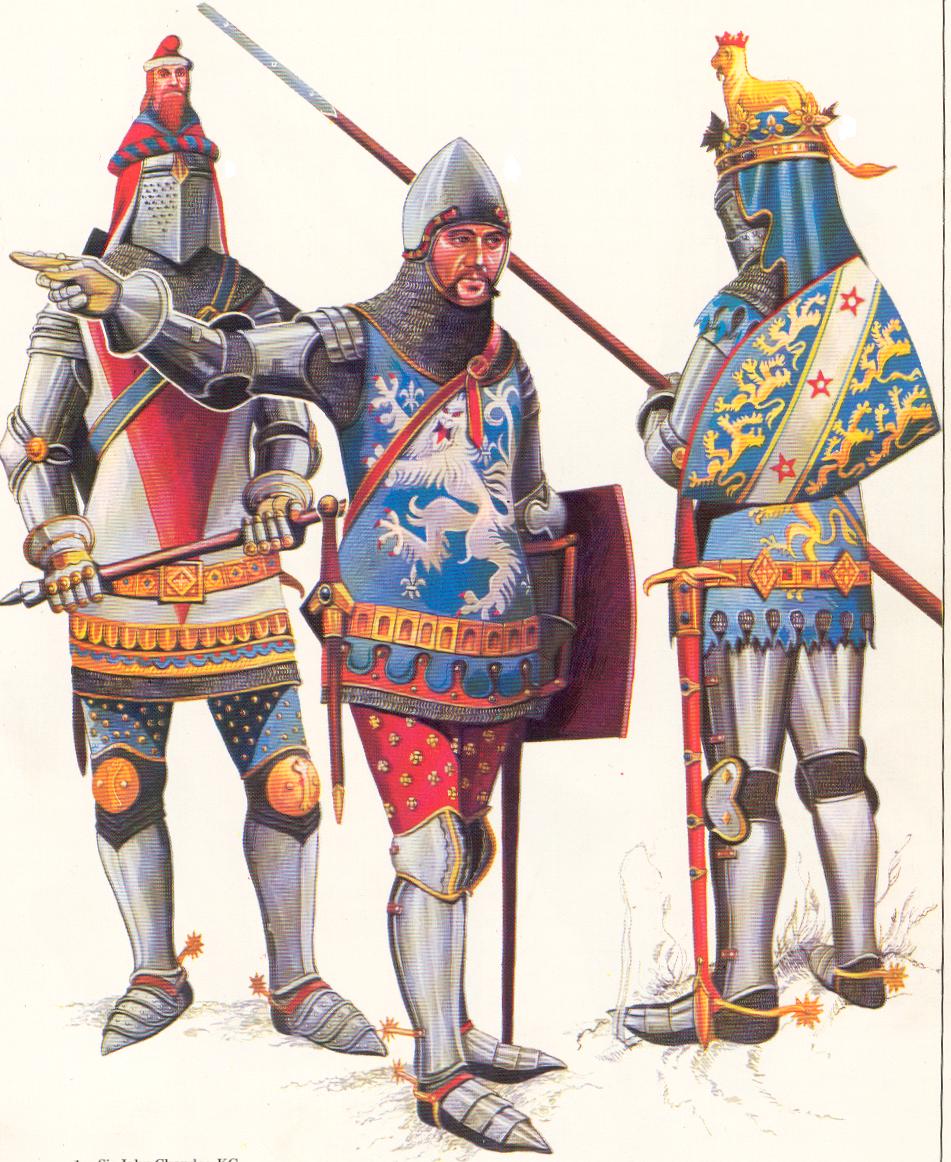 |
| The Crest was an ornament placed on the highest point of the helmet, and was a sign of distinction and exalted position in some respects. While there are many examples of the early use of crests throughout history this text will concern it’s self with the use of the crest from the 1200’s through the end of the 15th century. The use of the crest was not popular during the Norman period, but was found to be used as early as 1214, by the Earl of Boulogne at the battle of Bovines. The Earls crest consisted of two curved upstanding horns, made of stiffened parchment stuffed with wool. A modern equivalent today is paper-mache. This type of crest became very popular during the reign of King Edward I (Longshanks). The Germans used horns and Trumpets standing up with great regularity, examples can be seen in the ‘Die Wappenrolle von Zurich’ dated to 1340. Dating from the middle of the 13th century crests were also seen in the shape of a fan with the owners device painted on it. By the middle of the 14th century figures and devices were used in place of the fans. These figures were sometimes related to a detail of the owner’s device but were not limited to the components by any means. One distinction must be made at this time. A noble did not need a crest to have a device, nor was the use of a specific crest exclusively used for one family cognizance until the middle of the 14th century. Each noble may have used their own crest, as the crest was exclusive to the person who bore it. The use of a crest wreath came into use during the last 2/3’s of the 14th century. This wreath consisted of two pieces of material of the principal color and metal of the owner’s device. This rolled wreath or ‘Torce’ was placed at the base of the crest, on the top of the helm. From this Torce a mantling, or lambrequin could be hung. The mantle was a pennon shaped scarf in the principal color and metal of the owner’s device. There are many ways for one to make a crest for use within the SCA. Many of them have not changed since the 1400’s. The use of leather, wood, or stiffened parchment is still the primary materials for crest construction. One will only be limited by their imagination. Visit your local hobby shop, or crafts store and you will be confronted with a number of possibilities. The main thing to keep in mind is to try to make the crest look as period as possible. Some of the books located within the bibliography of this web page would be a good place to start for ideas. Within the Society for Creative Anachronism (SCA) we have adopted different rules of heraldry than what was observed in period. One does not need to have their personal device submitted to the college of heralds, but it is strongly suggested. There are three levels of submission, of arms. By receiving an award of Arms you can display your device only. After receiving a grant level award you may have a Torce and Mantling added in your primary color, and metal, along with a helm of your choice. Notice here that your helm may face the front or side. In period this was not the case. Only a Baronets and Knights could have a full-face view. Upon reaching the nobility one can add supporters and use a fur in their livery if they so chose. There is the case of Letters Patent, but this only allows for a fur to be used, with no supporters. In conclusion we are brought face to face with one of the problems a tournament company can come across within the SCA. We highly suggest following period conventions concerning crests, and heraldry for pas de’ armes. This further creates a feeling of really being there. There are countless examples of squires being dressed, and armed as well as knights as we progress towards the end of the 15th century. |
| The Crest |
 |
| Rothero, Christopher. The Armes of Cercy and Poiriers, 1981. |